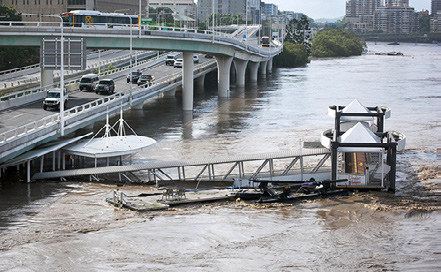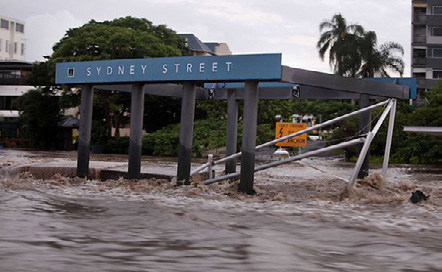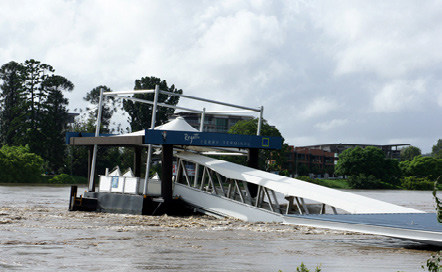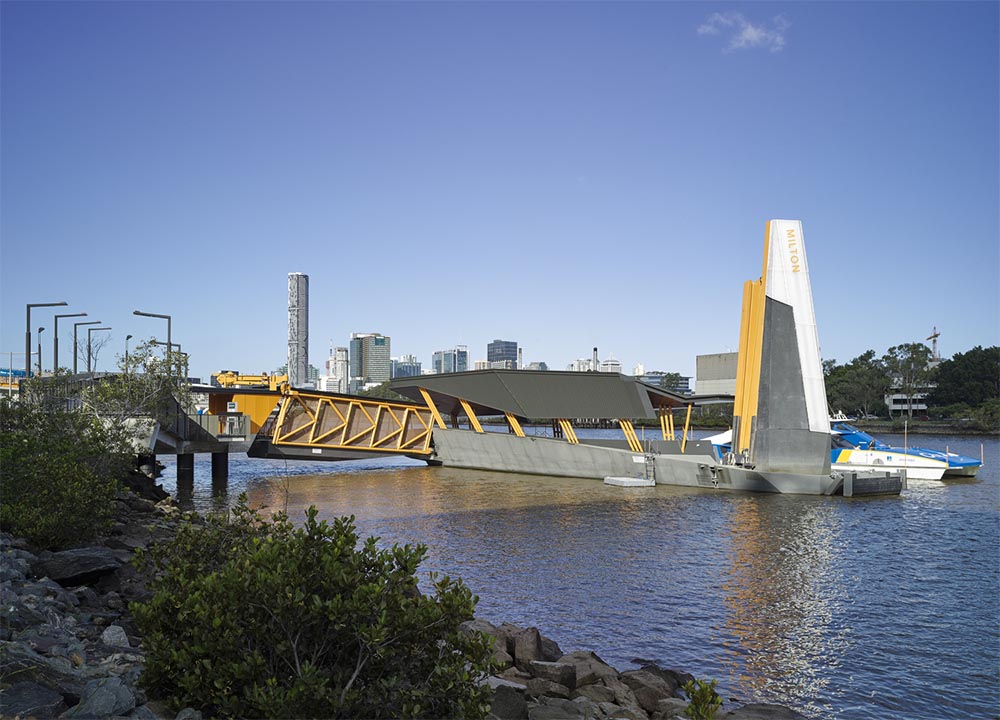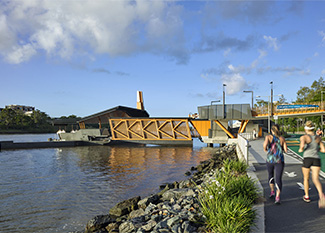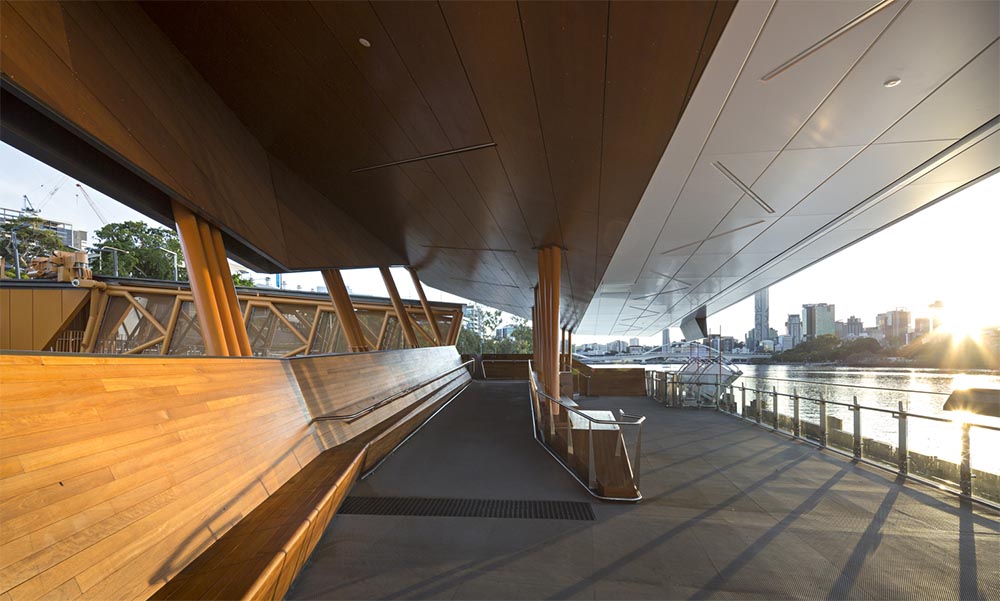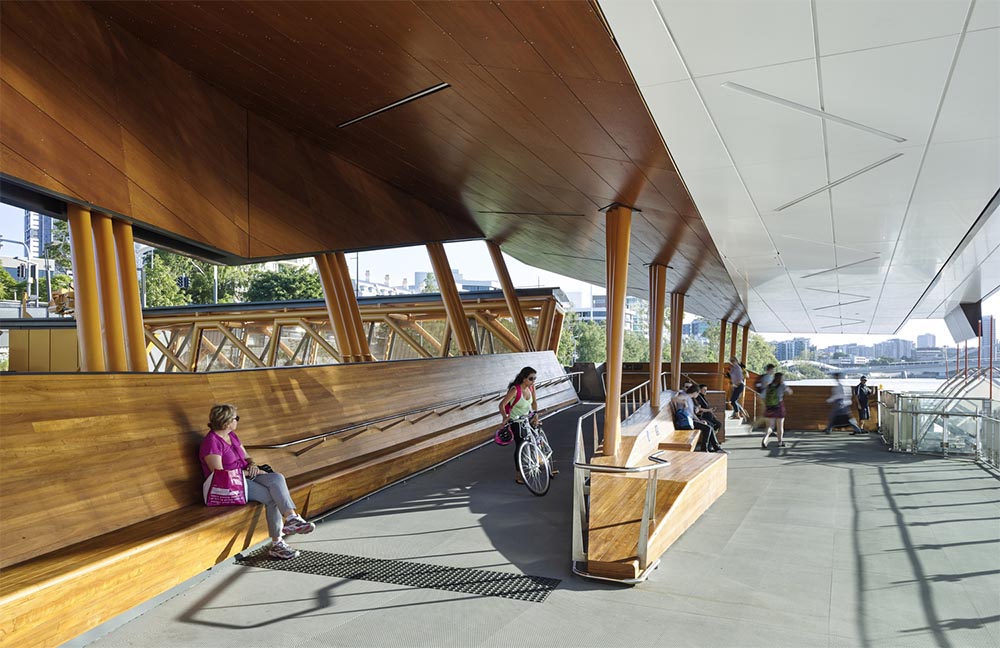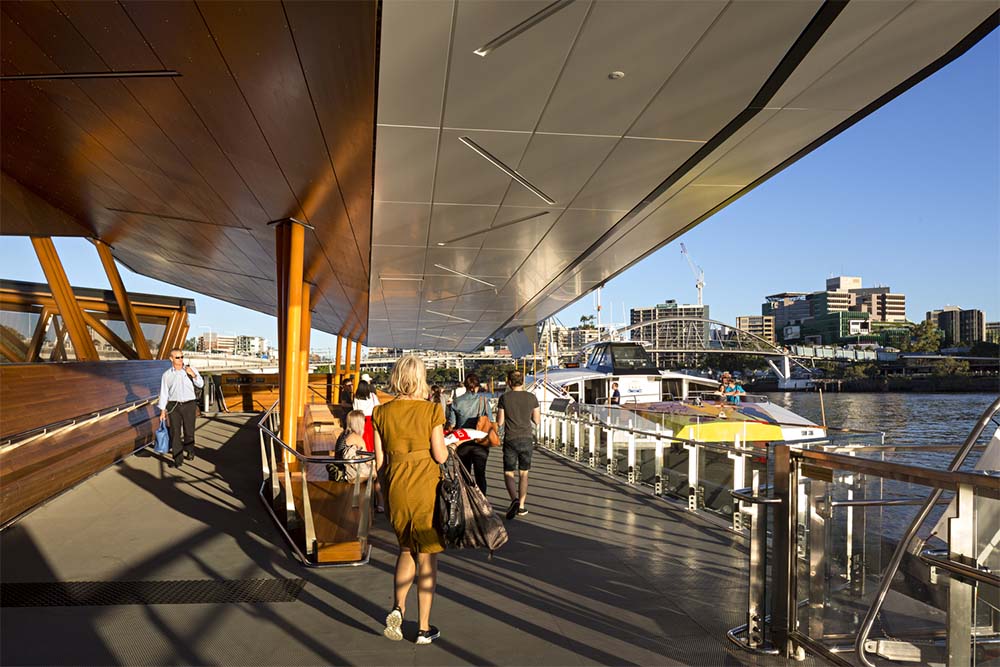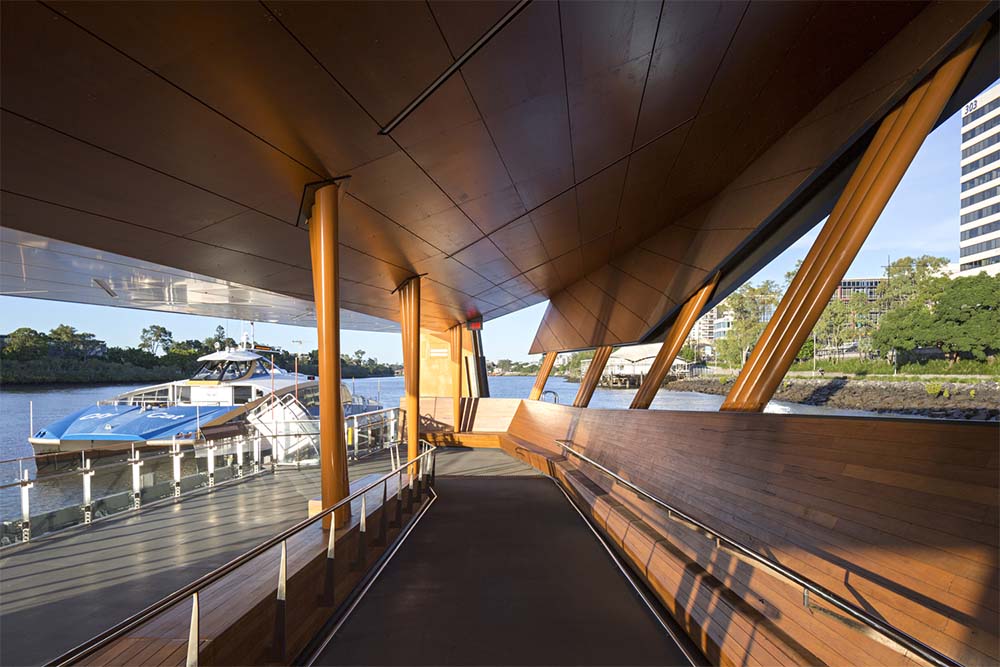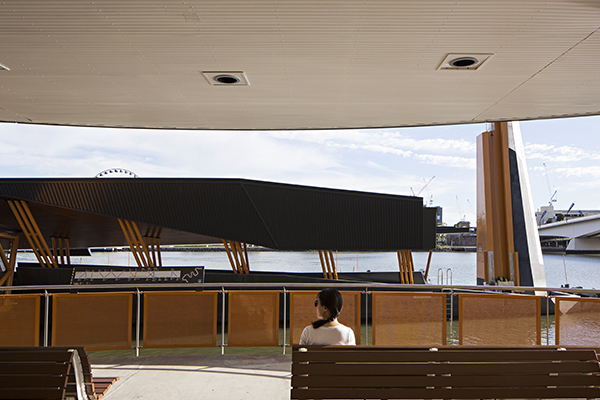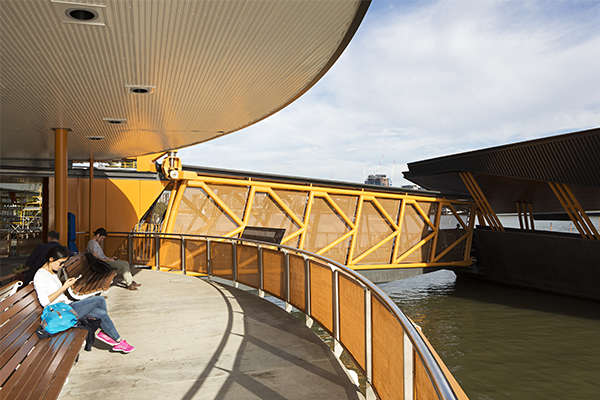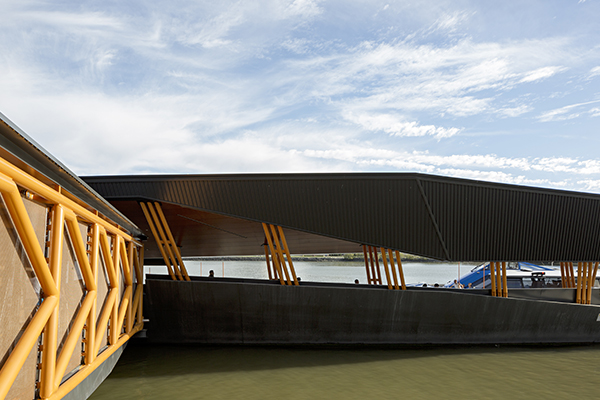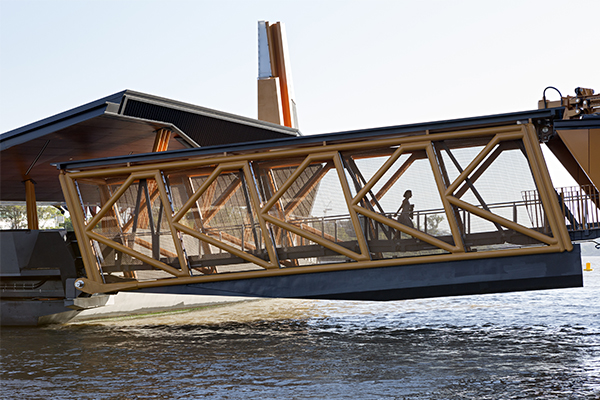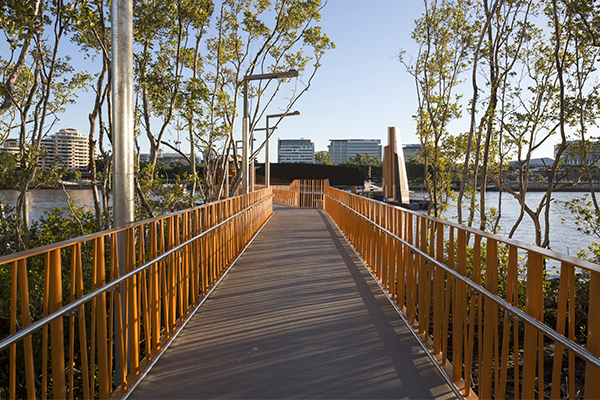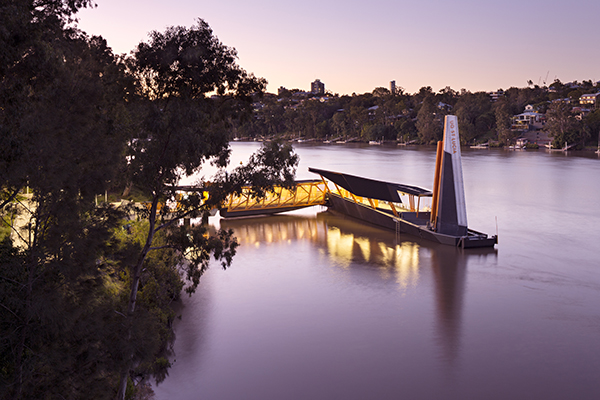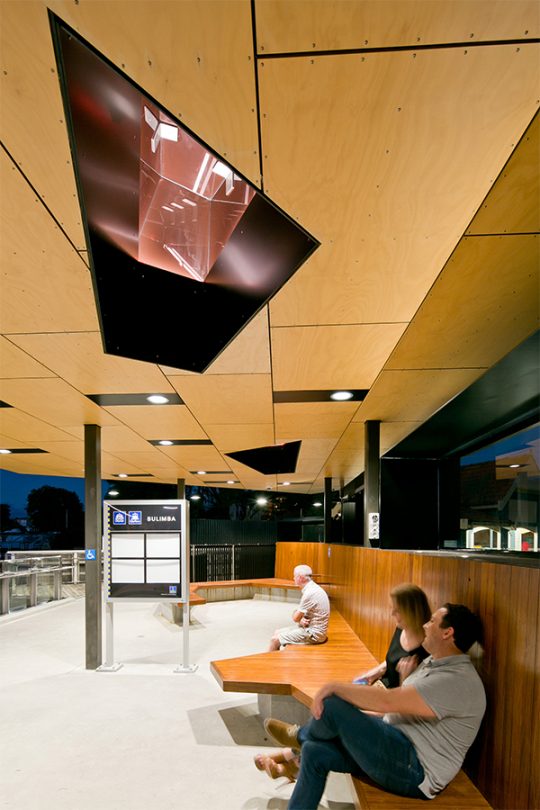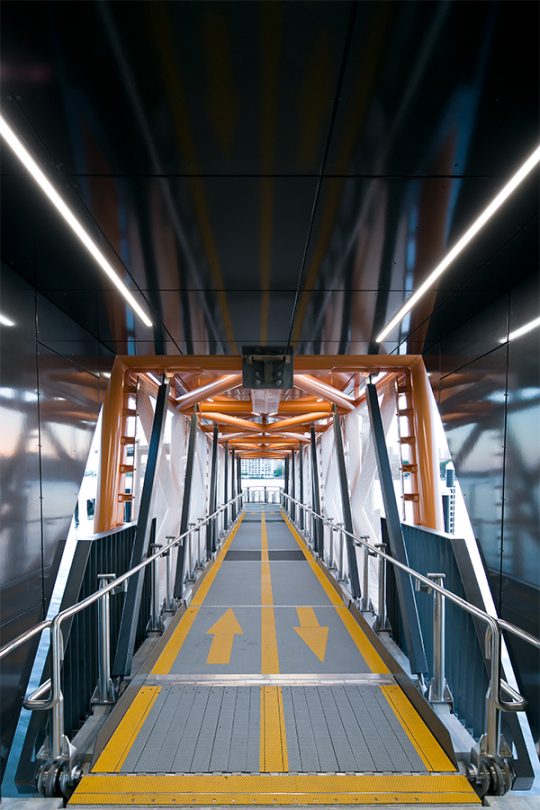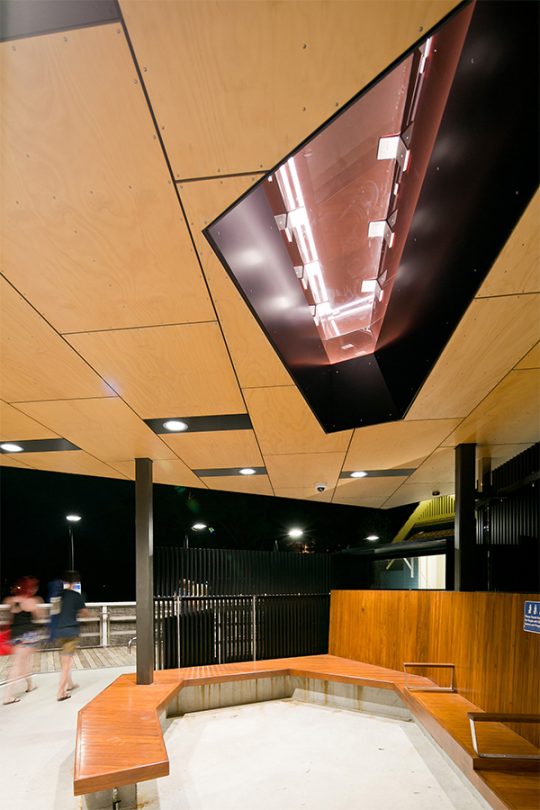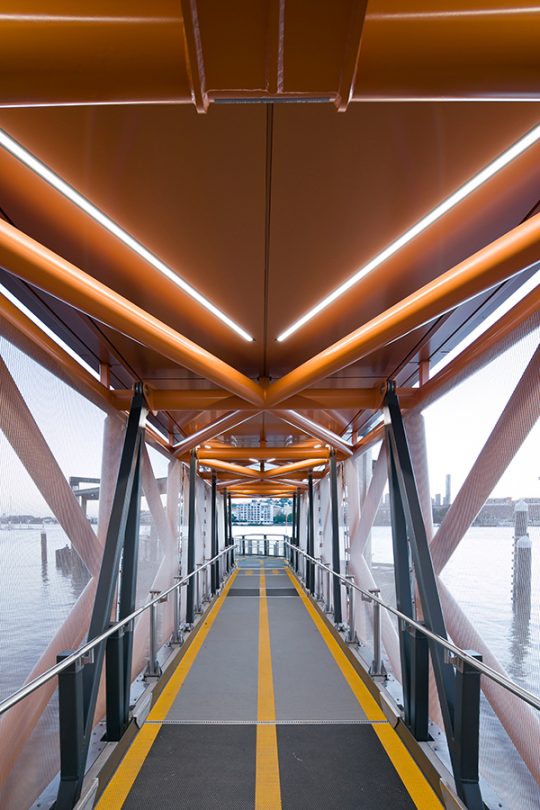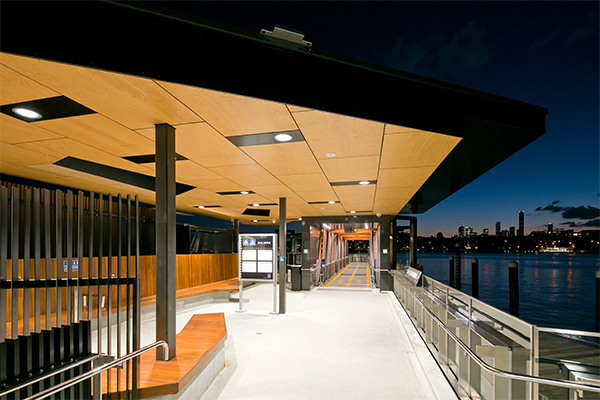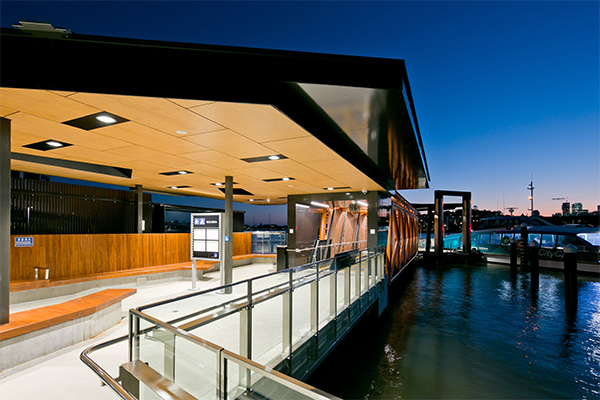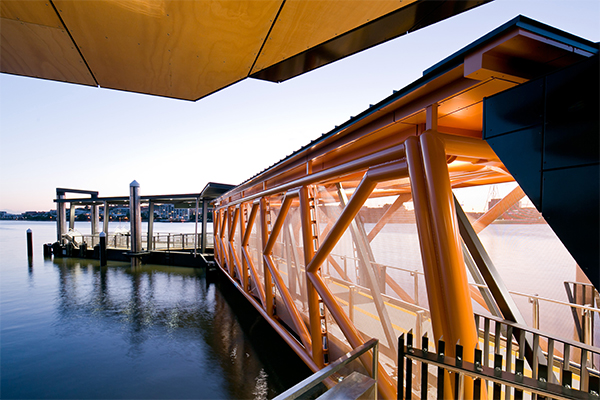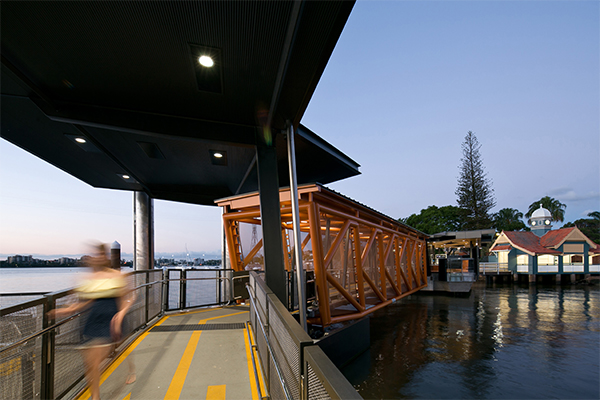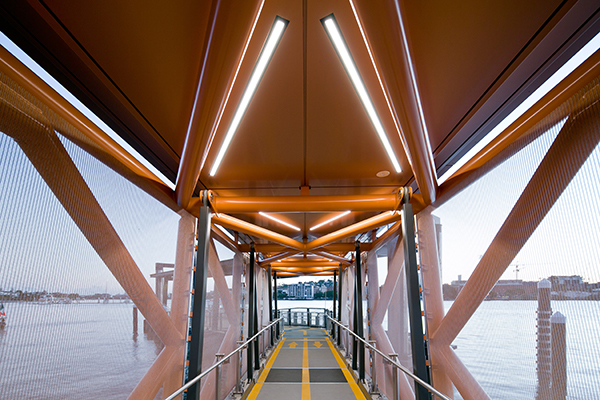Resilient infrastructure wins the ICE
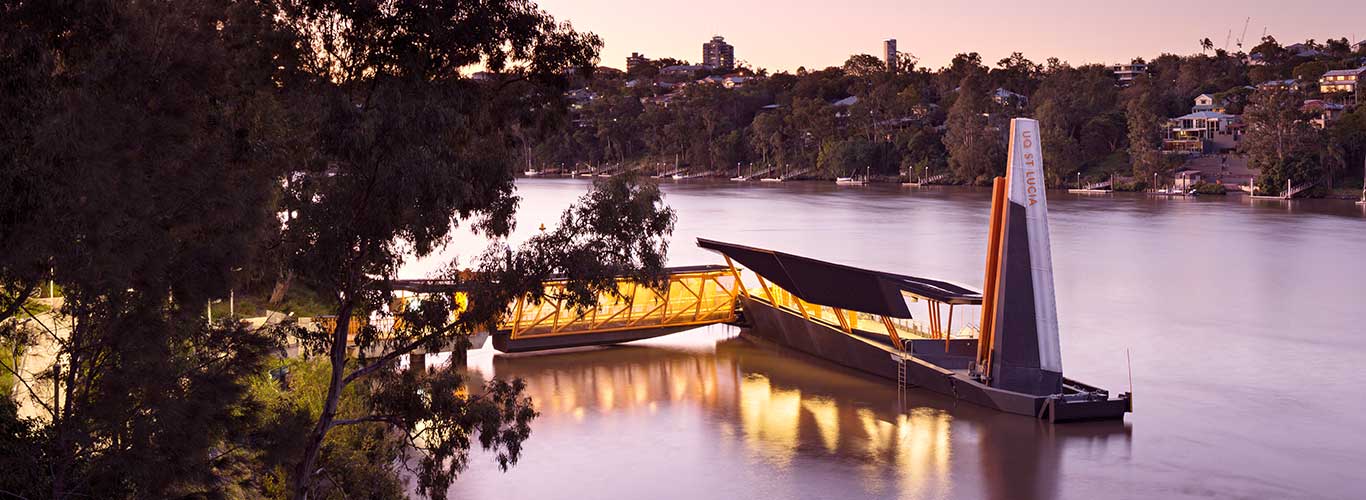
Cox Architecture together with project partners Aurecon were recently awarded the Brunel Medal for excellence in civil engineering for their revolutionary design of the Brisbane Flood Recovery Ferry Terminals.
Awarded by the United Kingdom’s Institution of Civil Engineers (ICE) annually, the Brunel Medal is named for Isambard Kingdom Brunel, a 19th century mechanical and civil engineer who to this day is considered one of the world’s most ingenious and prolific figures in engineering design.
The Brunel Medal adds to what has been an extraordinary series of accolades for the Brisbane Ferry Terminal design including:
- Good Design Australia Awards – Good Design Award of the Year – Flood Resilient and Accessible Ferry Terminals for Brisbane (Cox Architecture in association with Aurecon) 2017
- Engineers Australia highest accolade, Sir William Hudson Award in 2016
- Gold Award Winner – Consult Australia Awards for Excellence: Design Innovation (Aurecon in association with Cox Architecture), 2016
- Commendation for Urban Design, Delivered Outcome – Small Scale, Australian Urban Design Awards 2016
- RW Hawken Overall Project Award, AEEA QLD 2016
- Project Infrastructure Excellence Award, AEEA QLD 2016
- Innovation, Research and Development Excellence Award, AEEA QLD 2016
- Public Architecture Award, AIA QLD 2016
- Civic Landscape Award of Excellence, AILA QLD 2016 (Lat27)
- Good Design® Selection, Good Design Awards 2013
- Future Projects Award, World Architecture Festival 2013
After Brisbane’s CityCat Terminals capsized in the 2011 flood, the Queensland Government held a competition to see if a more resilient solution could be found.
Teaming with Aurecon and Brisbane City Council, Cox Architecture observed and simulated the impacts – accumulation of debris against the gangways as they submerged, and debris trapped in the ribbon of piles or against the pontoon’s flat leading edge. Had the flood risen a metre higher, the pontoons would have simply floated away.
Three main remedies were devised: one, fitting the gangways with air tanks, a hinge and a clasp enabling them to float and swivel around under the flood’s force; two, a single pier tall enough to prevent the pontoons floating off and robust enough to withstand large vessel impacts; three, shaping the pontoon like a boat to deflect debris around.
Simultaneously, the terminals were designed to enhance the experience of river travel and of public engagement with the river to meet with Council’s values of full accessibility and its aspiration as a New World City. Removing the multiple piles opened the river to unimpeded view, a canopy provided shelter, and ramping on the pontoon guided movement and offered varied places to relax.
Each terminal is characterised by its particular connection with the land and its neighbouring community.[/vc_column_text][/vc_column][vc_column width=”1/2″][vc_images_carousel images=”2193,2192,2191,4730,4728,4736,4734,4733,4731,5682,5683,5684,5685,5686,5687,5688,5689,5690,5691,5692,5693,5694,5695,5696″][vc_column_text]
